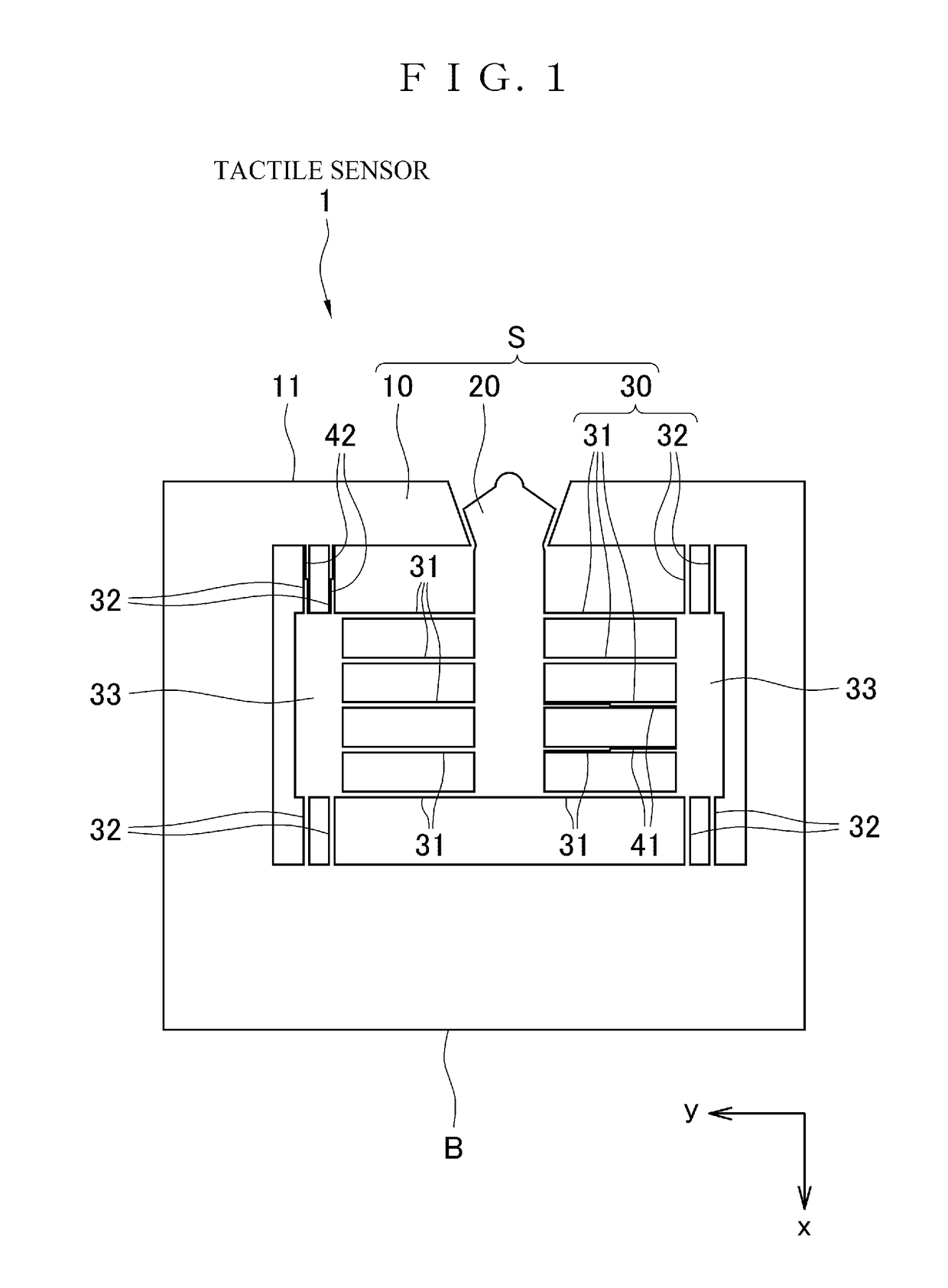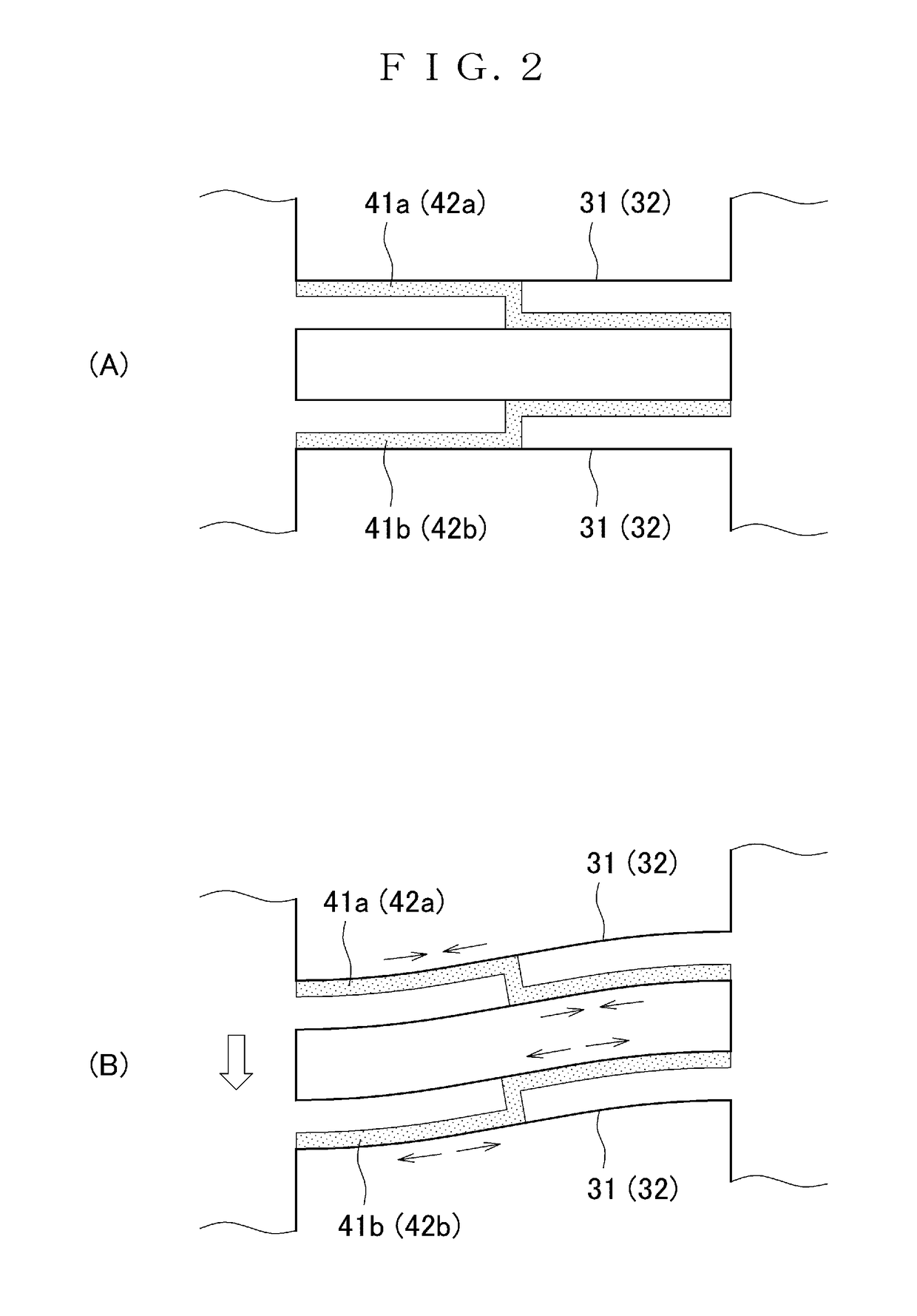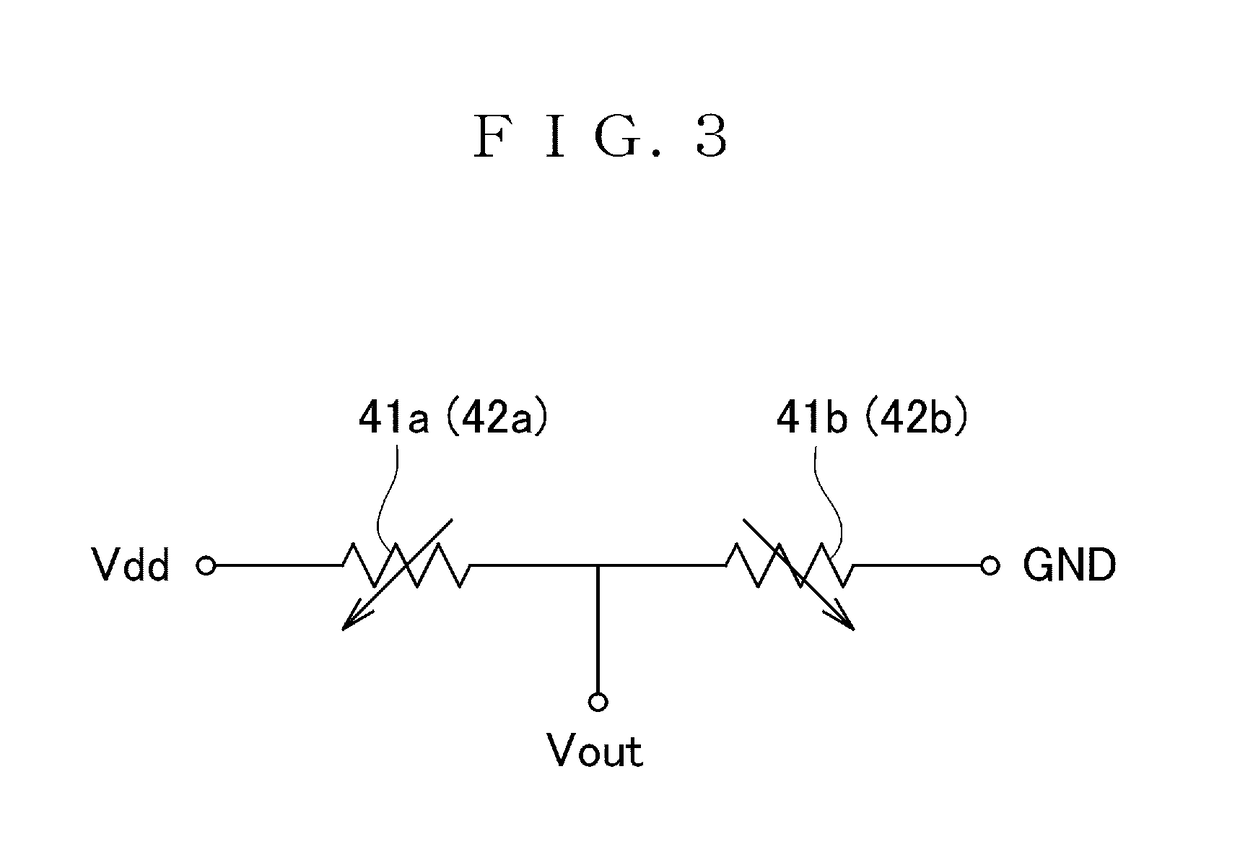Tactile sensor and method for evaluating touch feeling
a tactile sensor and touch technology, applied in the direction of mechanical roughness/irregularity measurement, force/torque/work measurement apparatus, instruments, etc., can solve the problems of inability to design the tip shape appropriate to various measuring objects, the flexibility of design of the touch sensor is limited, and the design change cannot be easily performed. , the effect of high design flexibility
- Summary
- Abstract
- Description
- Claims
- Application Information
AI Technical Summary
Benefits of technology
Problems solved by technology
Method used
Image
Examples
first embodiment
[0049]Configuration
[0050]As shown in FIG. 1, a tactile sensor 1 of the first embodiment of the invention includes a sensor part S formed through working a substrate B such as a SOI substrate by semiconductor micromachining techniques. The sensor part S has a frame 10, a contact 20, and a suspension 30 that supports the contact 20 to the frame 10. The size of the sensor part S is not limited to, but several millimeters square to more than ten millimeters square.
[0051]As described below, the contact 20 and the suspension 30 are formed by etching the substrate B in a predetermined pattern so as to remove unnecessary parts thereof. The frame 10 is the remained part of the substrate B after the unnecessary parts are removed, and has a shape enclosing the contact 20 and the suspension 30. The sensor part S has a sensing surface (surface coming in contact with a measuring object) which is one side face of the substrate B. In the embodiment, the upper face out of the side faces of the subst...
second embodiment
[0090]As shown in FIG. 8, a tactile sensor 2 of the second embodiment of the invention includes two sensor parts of a sensor part S1 and a sensor part S2. Each of the sensor parts S1 and S2 has the same configuration as the sensor part S of the tactile sensor 1 of the first embodiment, and thus the same codes are attached to the same members and the description thereof is omitted herein.
[0091]The sensor parts S1 and S2 are disposed so as to share a sensing surface. That is, the contact 20 of the sensor part S1 and the contact 20 of the sensor part S2 are disposed in parallel to each other and the both tips thereof are disposed on the shared sensing surface.
[0092]The tactile sensor 2 is slid while being pressed to the measuring object O. This allows each of the sensor parts S1 and S2 to detect the surface shape of the measuring object O. The two contacts 20 of the sensor parts S1 and S2 are disposed away from each other by a predetermined distance, and thus the cycles of ruggedness o...
third embodiment
[0095]As shown in FIG. 9, a tactile sensor 3 of the third embodiment of the invention includes two sensor parts of a sensor part S3 and a sensor part S4. Each of the sensor parts S3 and S4 basically has the same configuration as the sensor S of the tactile sensor 1 of the first embodiment, and thus the same codes are attached to the same members and the description thereof is omitted herein.
[0096]As a feature of the tactile sensor 3 of the embodiment, the tips of the contact 20 of the sensor part S3 and the contact 20 of the sensor part S4 are formed in circular arcs having different radii. That is, a contact part 21 having a semicircular shape with a radius r3 is formed on the tip of the contact 20 of the sensor part S3, while a contact part 21 having a semicircular shape with a radius r4 which is smaller than the radius r3 is formed on the tip of the contact 20 of the sensor part S4. The both contacts 20 are disposed so as to project by the same projection distance v from the refe...
PUM
| Property | Measurement | Unit |
|---|---|---|
| central angle | aaaaa | aaaaa |
| thickness | aaaaa | aaaaa |
| radius r4 | aaaaa | aaaaa |
Abstract
Description
Claims
Application Information
 Login to View More
Login to View More - R&D
- Intellectual Property
- Life Sciences
- Materials
- Tech Scout
- Unparalleled Data Quality
- Higher Quality Content
- 60% Fewer Hallucinations
Browse by: Latest US Patents, China's latest patents, Technical Efficacy Thesaurus, Application Domain, Technology Topic, Popular Technical Reports.
© 2025 PatSnap. All rights reserved.Legal|Privacy policy|Modern Slavery Act Transparency Statement|Sitemap|About US| Contact US: help@patsnap.com



